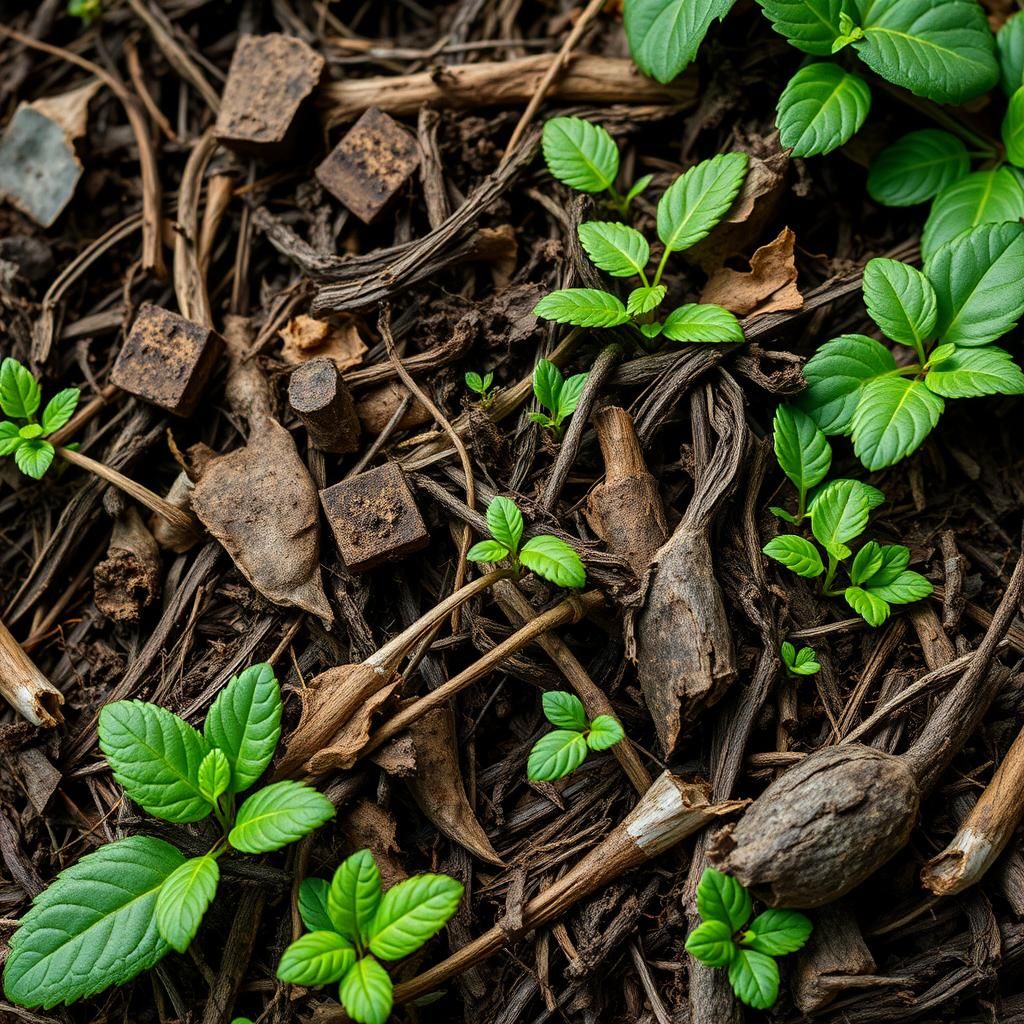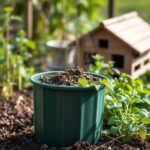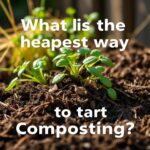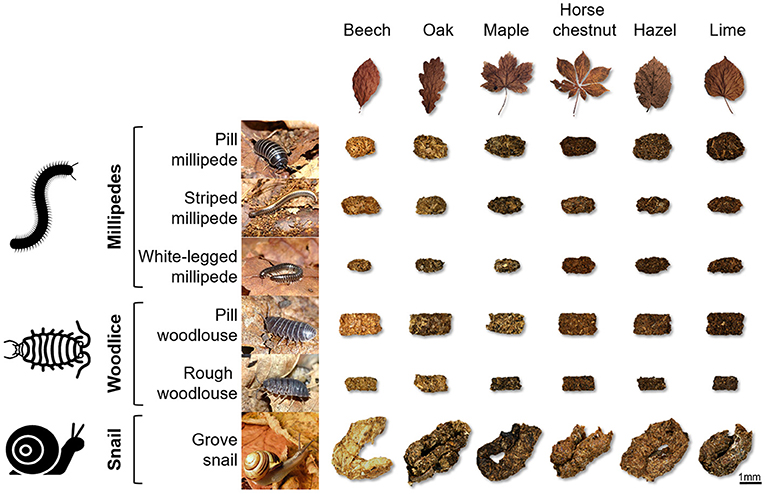Do Dead Plants Go in Compost? A Comprehensive Guide to Composting Organic Materials

Composting is an eco-friendly practice that transforms organic materials into nutrient-rich soil, benefiting both gardeners and the environment. One common question arises among composting enthusiasts: Do dead plants go in compost? Understanding the role of dead plant material in the composting process is essential for creating a healthy compost pile. This comprehensive guide will explore the benefits of including dead plants in your compost, how to properly prepare them, and the potential challenges you may face. By the end, you’ll be equipped with the knowledge to make the most of your composting efforts and contribute to a sustainable gardening approach.
Can Dead Plants Be Added to Compost?
Yes, dead plants can definitely be added to compost. They are an excellent source of nutrients and help to create a rich organic material that can enhance the health of your garden soil. When you add dead plants, they will break down over time through the process of decomposition, during which beneficial microorganisms and fungi work to transform the plant material into valuable compost. However, it is essential to ensure that the dead plants are free from diseases or pests, as this can compromise the quality of the compost. Overall, incorporating dead plants is a sustainable practice that contributes to a circular gardening ecosystem.
Benefits of Composting Dead Plants
Composting dead plants provides numerous benefits for gardeners. Firstly, it enriches the soil by adding essential nutrients that plants need for healthy growth. As the dead plant material breaks down, it improves soil structure, increases moisture retention, and enhances soil aeration. Additionally, composting reduces waste that would otherwise end up in landfills, promoting an eco-friendly approach to gardening. By returning nutrients to the earth, gardeners contribute to a more sustainable agricultural practice.
How to Prepare Dead Plants for Composting
Preparing dead plants for composting involves several steps. First, it is crucial to chop the dead plant material into smaller pieces, which will facilitate faster decomposition. Remove any diseased or pest-infested parts to prevent the spread of pathogens in your compost pile. Next, mix the dead plant material with other organic materials, such as kitchen scraps, grass clippings, and dried leaves, to create a balanced compost mix. This balance of brown (carbon-rich) and green (nitrogen-rich) materials ensures effective microbial activity during the composting process.
What Not to Include in Your Compost
While dead plants are generally suitable for compost, there are certain materials to avoid. It’s essential not to include any diseased plants, as they can spread pathogens throughout your compost and eventually your garden. Additionally, avoid adding weeds that have gone to seed, as they may germinate and thrive in your compost pile. Other items to omit include meat, dairy products, oils, and any materials treated with chemicals or pesticides. Maintaining proper composting practices ensures a healthy and safe final product.
Composting Process and Timeframe
The composting process for dead plants can vary widely in time depending on several factors, including the size of the plant material and the conditions of the compost pile. Generally, smaller pieces will decompose faster, taking anywhere from a few weeks to several months. Regularly turning the compost pile aerates it and speeds up the decomposition process by encouraging microbial activity. Maintaining the right moisture levels is also crucial; a compost pile that is too dry will slow down decomposition, while one that is too wet can lead to a stinky anaerobic condition.
Signs Your Compost is Ready
Determining when your compost is ready involves looking for several key signs. The compost should have a dark, crumbly texture and a pleasant, earthy smell. Large pieces of dead plants should be scarcely visible, indicating they have adequately decomposed. A good rule of thumb is to wait at least three to six months before using your compost, but you can check periodically for the signs of readiness. A completed compost will enrich your garden and provide a fantastic soil amendment for your plants.
| Type of Dead Plant Material | Recommended for Compost | Notes |
|---|---|---|
| Herbaceous plants | Yes | Decomposes quickly. |
| Woody stems | Yes (if shredded) | Breaks down slowly; shredding is beneficial. |
| Diseased plants | No | May spread disease in compost. |
| Weeds | Only if not seeded | Use caution with seeding weeds. |
| Organic kitchen scraps | Yes | Great complement to dead plants. |
How do you dispose of dead plants?

To properly dispose of dead plants, it is essential to understand the various methods that can be employed. Here are several recommended practices to ensure an environmentally friendly and effective disposal process:
Composting Dead Plants
Composting is one of the most sustainable options for disposing of dead plants. By turning dead plant material into compost, you create a nutrient-rich amendment for your garden. The process involves breaking down organic matter into a fertile substrate.
- Collect Dead Plant Material: Gather all dead leaves, stems, and roots.
- Shred or Chop: Cutting the plants into smaller pieces increases the speed of decomposition.
- Add to Compost Bin: Mix with other compost materials like kitchen scraps or grass clippings for balanced decomposition.
Municipal Yard Waste Collection
Many cities offer a residential yard waste collection service. This is an efficient way to have dead plants removed without much personal effort.
- Check Local Guidelines: Ensure your area has a yard waste collection program and understand the guidelines for disposal.
- Prepare Plants: Place dead plants in designated bags or bins as specified by local regulations.
- Schedule Pickup: Follow the designated schedule for collection to ensure proper disposal.
Burning Dead Plants
In certain areas, burning dead plant material is an acceptable method of disposal. However, check local regulations as burning may be restricted or require a permit.
- Review Regulations: Confirm permission for burning in your area to avoid legal issues.
- Select a Safe Location: Choose an open area away from structures and flammable objects.
- Conduct Safely: Monitor the fire at all times until fully extinguished to prevent wildfires.
Throwing Away in Regular Trash
If composting or municipal collection isn't an option, disposing of dead plants in the regular trash can be considered as a last resort.
See also:
- Wrap Properly: Securely bag the dead plant material to prevent any spillage during disposal.
- Check Local Waste Management: Ensure that your waste service accepts organic materials in regular trash.
- Dispose on Trash Day: Place the bags out on the scheduled trash collection day.
Pest Control Considerations
Dead plants may attract pests or diseases, so it's crucial to dispose of them carefully to protect your garden.
- Examine for Pests: Inspect dead plants for any signs of insects or diseases before disposal.
- Disinfect Tools: Use clean tools when handling dead material to avoid spreading any potential infection.
- Notify Neighbors: If you find pests, inform nearby gardeners to prevent the issue from spreading.
Can you throw plants in compost?

Yes, you can throw plants in compost, but there are certain considerations to ensure that the composting process is effective and safe. Composting involves the decomposition of organic matter, which can include various types of plants. However, it's essential to understand what types of plants are suitable for composting and what precautions need to be taken.
What Types of Plants Can Be Composted?
When deciding which plants to compost, it is crucial to focus on healthy plant materials. Here are some acceptable options:
- Fruit and Vegetable Scraps - Leftover peels and cores from fruits and vegetables can enrich your compost.
- Yard Waste - Grass clippings, leaves, and small branches are great additions to your compost pile.
- Houseplant Trimmings - Pruned leaves and stems from houseplants are generally safe for compost if they are healthy.
Avoiding Diseased or Invasive Plants
Not all plants are suitable for composting. It's important to avoid adding certain materials that could harm your compost or garden:
- Diseased Plants - Any plant that shows signs of disease or pest infestation can introduce problems into your compost.
- Weeds - Some weeds can survive the composting process and may spread when you use the compost.
- Invasive Species - Plants that are known to be invasive should be avoided as they can thrive in compost and cause issues in your garden.
Preparing Plants for Composting
To maximize compost efficiency, preparing your plant materials correctly is essential:
- Chop or Shred - Reducing the size of plant materials helps speed up the decomposition process.
- Mix Materials - Combining greens (nitrogen-rich) with browns (carbon-rich) will improve the balance needed for healthy compost.
- Aerate the Pile - Turning the compost pile periodically helps introduce oxygen, which is necessary for the breakdown of materials.
Composting Techniques for Plants
There are different methods to effectively compost plant materials. Choose the technique that suits your needs:
- Hot Composting - This method involves maintaining high temperatures to kill pathogens and weeds, which is beneficial for composting more challenging plant materials.
- Cold Composting - A slower process that allows organic material to break down naturally over time, suitable for those who prefer a more passive approach.
- Bokashi Method - An anaerobic fermentation process that can compost even meat and dairy in small amounts, offering a unique alternative for composting diverse materials.
Using Compost from Plants
Utilizing compost generated from plant materials can significantly benefit your garden:
- Soil Enrichment - Compost adds nutrients, improves soil structure, and enhances moisture retention.
- Promoting Healthy Plant Growth - By using well-composted materials, your plants will have access to essential nutrients for better growth.
- Reducing Waste - Composting helps reduce the amount of organic waste sent to landfills, promoting sustainability.
Can I put dead leaves in my compost?

Yes, you can put dead leaves in your compost. They are a valuable addition to your compost pile because they contribute carbon, an essential nutrient for the composting process. Dead leaves provide a rich source of brown materials, which balance out the green materials typically found in kitchen scraps, grass clippings, and other nitrogen-rich materials. To optimize the composting process, consider shredding the leaves before adding them to the pile, as this increases the surface area and accelerates decomposition.
Benefits of Adding Dead Leaves to Compost
Including dead leaves in your compost has several benefits:
- Carbon Source: Dead leaves are a great source of carbon, essential for balanced compost.
- Improved Aeration: Shredded leaves can help aerate your compost, promoting better microbial activity.
- Moisture Retention: Leaves can help retain moisture within the compost pile, creating an ideal environment for decomposition.
How to Prepare Dead Leaves for Composting
To ensure effective composting, preparing dead leaves is important:
- Shredding: Shred leaves to increase their surface area and accelerate decomposition.
- Mixing: Combine leaves with other green materials for a balanced compost mix.
- Moisture Check: Make sure the leaves are moist but not overly wet to maintain a healthy compost environment.
Potential Issues with Dead Leaves in Compost
There are a few potential issues to consider:
See also:
- Acidic Leaves: Some leaves (like oak) can be acidic; mixing with alkaline materials can help.
- Slow Decomposition: Whole leaves may take longer to break down; shredding helps mitigate this.
- Excess Brown Material: Too many leaves can create an imbalance; ensure to maintain a ratio of greens and browns.
Best Types of Leaves for Composting
Not all leaves are equal when it comes to composting. Some of the best types include:
- Maple Leaves: Decompose quickly and provide a good balance of nutrients.
- Willow Leaves: They contain hormones that can actually benefit the composting process.
- Aspen Leaves: These also break down rapidly and provide nutrients for the compost.
When to Add Dead Leaves to Your Compost
Timing can affect the efficacy of composting dead leaves:
- Fall Collection: Gather leaves in the fall when they are plentiful.
- Layering: Add them in layers with green materials throughout the composting process.
- Harvest Timing: Consider adding leaves during moderate temperatures for optimal decomposition.
How long does it take for dead plants to decompose?

The time it takes for dead plants to decompose can vary significantly based on several factors. Generally, the decomposition process can take anywhere from a few weeks to several months or even years, depending on conditions such as the type of plant, environmental factors, and the presence of decomposing organisms.
Factors Influencing Decomposition Time
The decomposition of dead plants is influenced by various factors:
- Temperature: Warmer temperatures generally accelerate decomposition.
- Moisture Levels: Adequate moisture is necessary for the organisms that break down dead matter.
- Type of Plant Material: Soft, green plant matter decomposes faster compared to woody plants.
- Soil Organisms: Earthworms, bacteria, and fungi play a crucial role in breaking down plant material.
- Oxygen Availability: Aerobic conditions promote faster decay than anaerobic conditions.
Types of Plants and Their Decomposition Rates
Different types of plants decompose at varying rates due to their biological composition:
- Green Leaves: Typically decompose within a few weeks, especially during warm, moist conditions.
- Flowers: Usually take a few weeks to a couple of months to fully decompose.
- Herbaceous Plants: Can take several weeks to a few months depending on the climate.
- Woody Plants: May take several months to years, particularly for larger branches and trunks.
- Roots: Generally decay slower than leaves due to their dense structure.
Environmental Impact on Decomposition
The surrounding environment plays a vital role in the decomposition process:
- Climate: Regions with higher humidity and temperatures can facilitate faster decomposition.
- Seasonality: Spring and summer months generally enhance decay rates compared to fall and winter.
- Soil Type: Loamy soils promote better microbial activity, aiding in decomposition.
- Vegetation Cover: Dense vegetation can hinder airflow, affecting moisture levels and decomposition rates.
- Pesticide Use: Chemicals can negatively impact the organisms responsible for breaking down plant matter.
The Role of Microorganisms in Decomposition
Microorganisms such as bacteria and fungi are critical in breaking down dead plant materials:
- Bacteria: These are often the first decomposers, breaking down simple compounds.
- Fungi: Specialize in decomposing complex organic materials like lignin and cellulose.
- Decomposing Invertebrates: Earthworms and insects also aid in the physical breakdown of materials.
- Microbial Diversity: A diverse community of microorganisms can enhance the efficiency of decomposition.
- Decay Products: They create nutrient-rich substances that benefit surrounding plants.
Observation of Decomposition Process
Observing the stages of decomposition can provide insights into the health of an ecosystem:
- Initial Stage: The plant begins to wilt and change color, often within a few days.
- Active Decomposition: Visible microbial activity leads to the breakdown of plant tissues.
- Fragmentation: The plant material starts to break down into smaller pieces.
- Nutrient Cycling: Nutrients are released back into the soil, enriching it for new growth.
- Final Stage: The remnants disappear, leaving behind enriched soil or compost.
Questions from Our Readers
Do dead plants go in compost?
Yes, dead plants can absolutely go in compost. They break down and add valuable nutrients to the compost, which can enhance the quality of your soil.
What types of dead plants are suitable for composting?
You can include a variety of dead plants in your compost, such as leaves, flowers, and certain weeds. However, it's best to avoid diseased plants to prevent the spread of pathogens in your compost.
Should you chop up dead plants before composting?
Yes, it's recommended to chop up dead plants before adding them to the compost pile. This helps them decompose faster and improves the overall aeration of the compost.
Can you compost dead plants with seeds?
Composting dead plants with seeds can be tricky. Some seeds may germinate in the compost, leading to unwanted weeds in your garden. It's advisable to compost them only if you are sure they won't survive the composting process.
See also:

If you want to read more articles like Do Dead Plants Go in Compost? A Comprehensive Guide to Composting Organic Materials, we recommend you check out our Compost category.
Leave a Reply
Related Articles